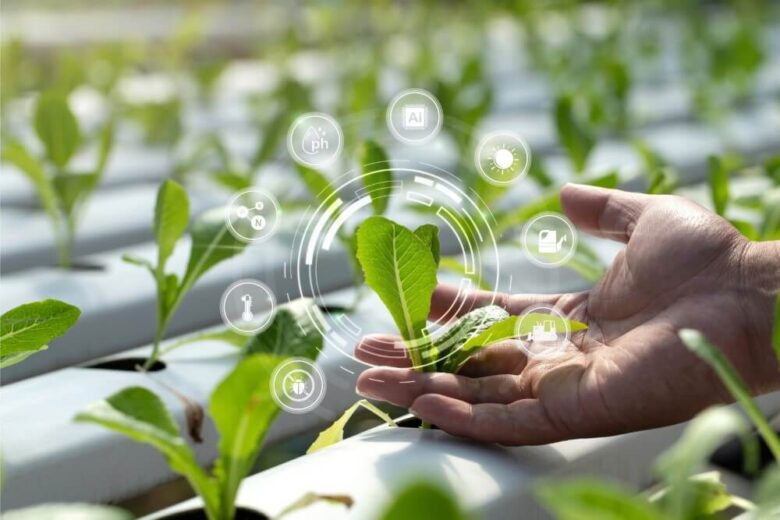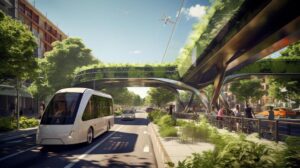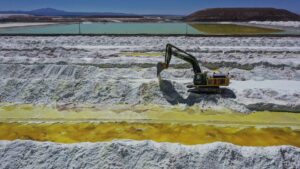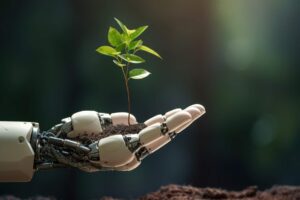Agriculture has been the foundation of human civilization for centuries. But with population growth and increasing environmental pressures, traditional farming practices are facing unprecedented challenges. Green technology is changing the way we grow food. Green technologies like vertical farming and smart irrigation systems reduce pollution and resource waste while increasing yields.
It’s about building a sustainable and profitable future for agriculture. In addition to increasing yields, farmers are now also using innovation to protect the environment. Modern agriculture is undergoing dramatic changes through the combination of environmentally friendly practices and data-driven solutions. This article explores how green technology is changing agriculture and why it’s more important than ever.
Precision Farming:
Precision farming is revolutionizing agriculture by using technology to track and improve every aspect of crop production. Using equipment like GPS systems, soil sensors, and drones, farmers can accurately determine how much water, fertilizer, or insect control is needed for each part of their crop. This targeted strategy increases yield per acre, reduces waste, and improves efficiency.
Precision farming ensures that not a single drop of water or fertilizer particle is wasted, while traditional farming distributes resources evenly without taking into account actual needs. Farmers can make timely decisions by utilizing predictive models, crop health images, and weather data. The result is higher crop yields and less damage to the environment. This technology is of enormous importance in areas experiencing climate change, as it allows farmers to respond quickly and sustainably.
Smart Irrigation System:
Water is one of the most precious resources in agriculture. Smart irrigation technology is changing the way farms use water. To deliver the right amount of water at the right time, these systems use real-time data on plant conditions, soil moisture levels, and weather forecasts. Smart irrigation ensures that less water is lost through evaporation or overwatering compared to traditional time-dependent sprinklers.
This process helps plants grow healthier while saving electricity and water. Whether it’s cloud-connected sensors or drip irrigation with automated valves, these systems adapt to the specific requirements of each crop. With smartphones, farmers can monitor and manage irrigation, improving accuracy and saving labor. As droughts become more common, smart irrigation is not only a convenience but essential for sustainable agriculture.
Growing Crops Vertically:
Vertical farming is a significant advancement in agriculture. Vertical farms significantly reduce land use and increase yields by growing crops in stacks in a controlled indoor environment. To maximize growing conditions year-round, these high-tech farms use climate control, hydroponic or aeroponic systems, and LED lighting. Vertical farming could flourish in cities, eliminating the need for large agricultural plots of land, bringing fresh produce closer to consumers, and reducing transportation emissions.
It’s also one of the most environmentally friendly agricultural practices, recycling water and eliminating the need for pesticides. Despite the high start-up costs, the long-term benefits, such as increased production per square foot and reduced resource waste, are difficult to ignore. As urban populations grow, vertical farming can become an important part of local food production.
Organic and Biodegradable Inputs:
Fertilizers, pesticides, and herbicides—chemicals used in conventional agriculture—have a lasting impact on ecosystems and soil health. Green technology is driving a shift toward organic and biodegradable materials that break down organically and sustainably. These environmentally friendly solutions protect beneficial organisms, improve soil health, and keep water clean. Organic farming methods are becoming increasingly popular among commercial farms and small-scale farmers due to growing consumer awareness and market demand. Botanical sprays and biological enemies are examples of innovations in biological pest control that are proving to be as successful as synthetic pesticides. These methods gradually restore soil fertility and reduce farmers’ carbon footprint. Both farmers and the environment benefit.
Farms That Use Renewable Energy:
Green technology also improves the energy efficiency of the farm by integrating renewable energy sources such as solar panels, wind turbines, and biogas systems. These solutions allow farmers to reduce their operating expenses and their reliance on fossil fuels. For example, wind energy can power cooling plants or food storage, and solar pumps can power irrigation systems during the day. Anaerobic digesters even convert animal waste into bioenergy, turning potential pollutants into clean energy. In addition to reducing greenhouse gas emissions, the process also makes the farming model more self-sufficient. With rising energy costs and increasingly stringent climate requirements, renewable energy is becoming an essential part of today’s agricultural infrastructure.
Application of Drone Technology in Agriculture:
Drones are now an indispensable part of the farmer’s toolkit and no longer just for hobbyists or filmmakers. Drones equipped with high-resolution cameras and sensors can fly over large fields in real time to help detect problems such as crop diseases, pests, and water stress. This method allows farmers to take quick and targeted action without having to cover large areas of land. Some advanced drones can even plant or spray fertilizer in specific spots, saving time and increasing accuracy. In addition to monitoring, drones are also used for planning and mapping, helping farmers optimize planting plans and field layouts. Drones can increase crop yields, reduce environmental impact, save time, and reduce input costs.
Artificial Intelligence Crop Management:
Artificial intelligence is putting brains to work on farms. Artificial intelligence systems can use machine learning algorithms and big data analytics to predict crop yields, suggest planting times, and recommend pest or disease management strategies. The findings come from analyzing data far beyond the capabilities of humans alone, including local climate data and satellite imagery.
Artificial intelligence can help farmers speed up informed decisions, reducing guesswork and increasing efficiency. For example, AI can predict when to harvest crops to maximize quality and minimize waste. To further reduce labor and emissions, even equipment like harvesters and tractors could be automated. AI offers farmers the advantage of farming smarter, not harder, in a world where time and accuracy are crucial.
Conclusion:
The green, smart, and attractive future of agriculture is here. Green technologies are making agriculture a more resilient, efficient, and sustainable sector. Data-driven farming, resource-efficient systems, and sustainable energy are just a few examples of technologies that are solving today’s problems and preparing for tomorrow’s. Technologies that were unthinkable a decade ago are now allowing farmers to produce more food with fewer resources and with less damage to the environment. There is no doubt that green technologies will continue to be the foundation for sustainable agriculture in the future. It’s not just about feeding the world; it’s also about doing it efficiently, responsibly, and with respect for the environment.
FAQs:
1. What is green technology in agriculture?
Smart irrigation, vertical farming, and renewable energy are examples of sustainable agricultural technologies and practices that can reduce environmental impact while increasing yields.
2. How much does it cost to install Greentech Agriculture?
Many green technologies can increase production and provide long-term savings. While the initial costs may be higher, they are profitable in the long run.
3. Can green technology help small-scale farmers?
Yes. Because many green technologies are scalable and adaptable, even small farms can become more sustainable and efficient.
4. What are the environmental benefits of vertical farming?
By producing food closer to cities, vertical farming can reduce transportation-related emissions, conserve water, eliminate the need for pesticides, and reduce land use.
5. Are there government incentives for green farming practices?
Many countries offer tax breaks, subsidies, or grants to farmers who use environmentally friendly methods and technologies.




